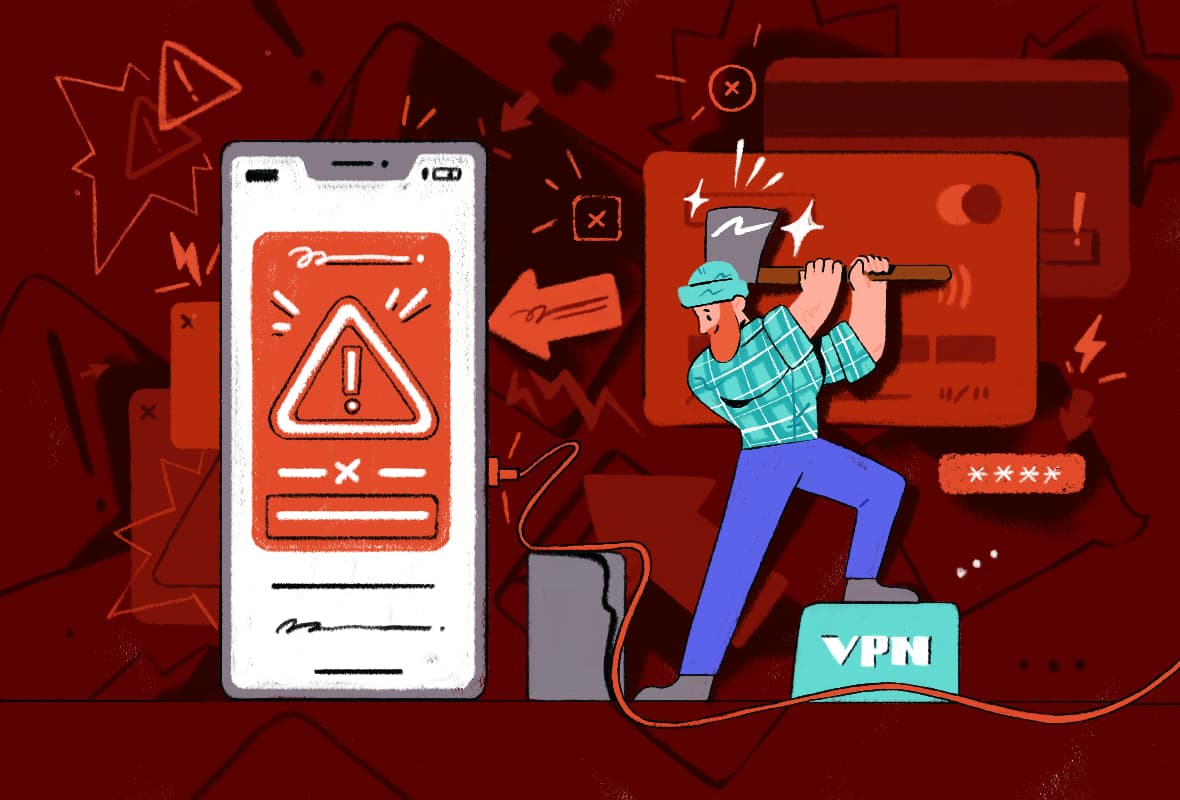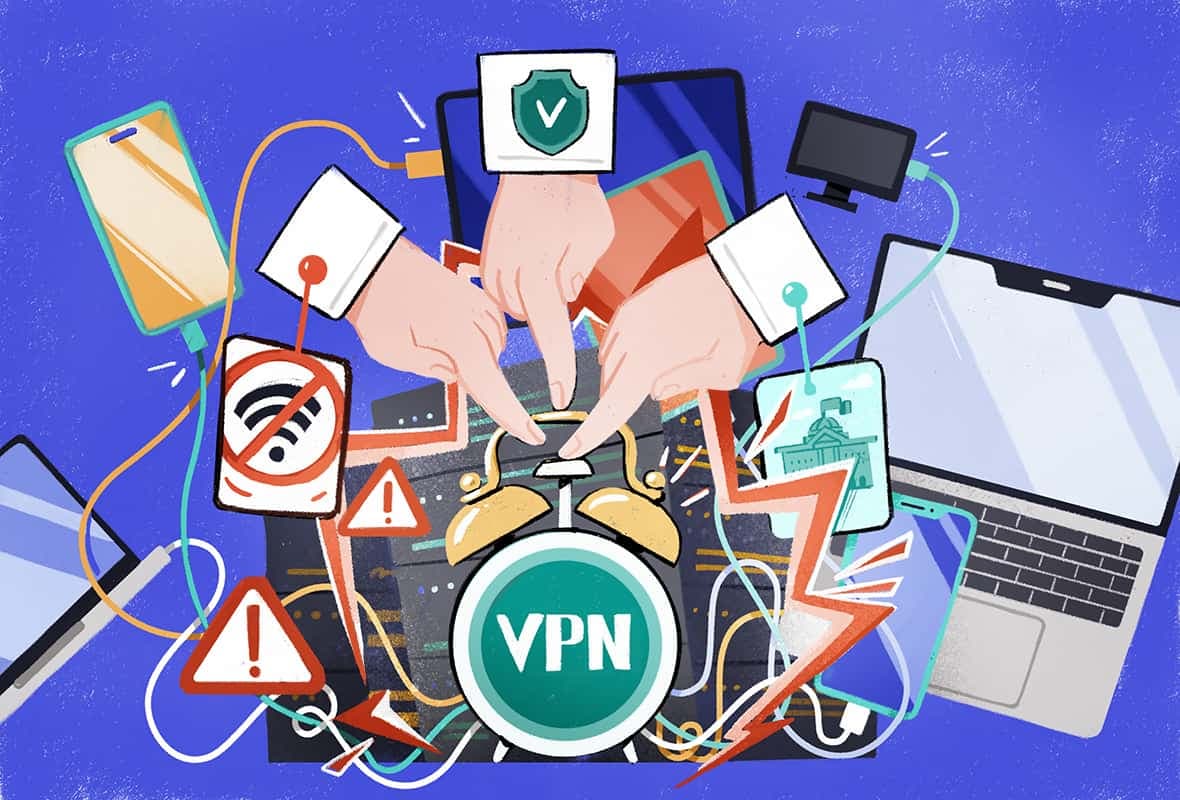Here’s exactly how a VPN kill switch works:
- 🔎 Monitoring: The kill switch constantly surveys your VPN connection, looking for any changes in your network status or IP address.
- 🚨 Detecting: Any alteration or disruption to your VPN connection is immediately detected by the kill switch.
- ✂️ Disconnecting: The kill switch responds by cutting your device’s connection to the internet or to a specifically chosen app.
- 🛜 Reconnecting: Once your VPN connection is restored, the kill switch deactivates and allows your internet connection to reestablish.
Types of VPN Kill Switch
Though all kill switches broadly follow the process outlined above, exactly how they work depends on their implementation.
Most notably, VPN kill switches vary by what causes them to activate and how they are applied.
Standard Kill Switch
The kill switch engages when it detects a disconnection from the VPN, blocking your device’s connection to the internet. Your internet connection resumes once your VPN connection reestablishes or the VPN app is closed. This is the most common type of kill switch and is available from the vast majority of VPN services.
Permanent Kill Switch
Your entire device is blocked from the internet once you lose connection to the VPN server. Your internet connection cannot resume until you reconnect to the VPN, even once the VPN app is closed. This is also referred to as an ‘advanced kill switch’ or ‘network kill switch’ and is only offered by a handful of VPN services, like PIA or Windscribe.
Permanent kill switches offer the greatest level of protection as disconnecting your entire device’s connection makes IP leaks far less likely.
Application Kill Switch
Only pre-selected apps are disconnected from the internet in case of an unexpected VPN disconnection. The rest of your device continues to function as normal. This is the rarest type of kill switch and is only offered by select VPN services, such as NordVPN.
Application-level kill switches can be useful if you have a specific use-case for your VPN. For example, if you’re using a VPN to torrent then you may want to only block your torrenting client.
This offers greater flexibility as you can continue to browse freely while keeping your torrenting traffic safe.












